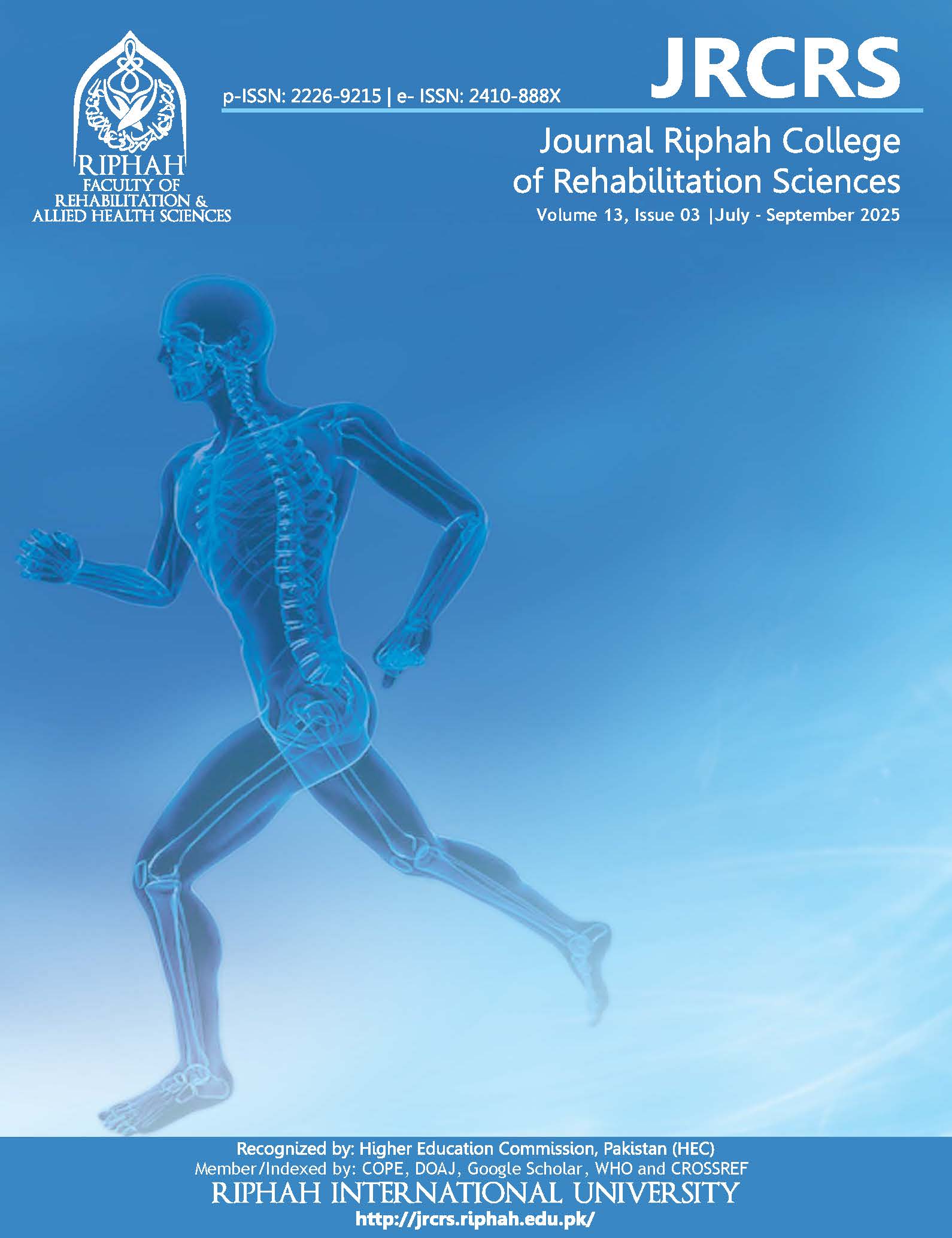Comparing Neuromuscular Training and Closed Chain Exercises in Athletes with Ankle Sprains: Efficacy in Pain Reduction, Joint Mobility, Balance, And Functional Disability: A Randomized Control Trial
Abstract
Abstract:
Background: Ankle sprains are one of the most common musculoskeletal injuries in athletes and are caused mainly by inversion during dynamic movement, change of direction, and jump. The injuries predominantly affect the lateral ligament complex, with emphasis on the anterior talofibular ligament
Objective: To determine the effects of neuromuscular training versus closed kinetic exercise on pain, range of motion, balance, and function in athletes with ankle sprain.
Methodology: This RCT compared Neuromuscular training (NMT) to Closed Chain exercises (CKC) in 40 athletes with acute grade I-II ankle sprains. Participants were randomly assigned to the group that got either CKC exercises (n=20) or neuromuscular training (n=20), 3×/week for 4 weeks. Outcomes measured were pain (Numerical Pain Rating Scale NPRS), range of motion (goniometer), balance (Star Excursion Balance Test), and function (Functional Ankle Ability Measure FAAM), with statistical analyses performed using t-tests (p<0.05). (CTR: NCT06198270
Results: Statistically significant improvement occurred in pain, balance, ROM, and function for 2 groups (p<0.001). Pain reduction was better in the KT group (1.3±0.17 vs. 3.6±0.67), along with superior ROM gains on dorsiflexion (3.7°±1.8° vs. 2.5°±1.4°), on plantarflexion (6.8°±2.4° vs. 3.7°±2.2°), balance (20.6cm±3.7cm vs. 11.7cm±3.0cm SEBT), and function (16.9%±3.4% vs. 5.5%±1.7% FAAM-S) compared with the CKC group (all p<0.001). Hence, neuromuscular training was more effective than CKC exercises for some clinical variables.
Conclusion: Given that both therapies brought great improvements in pain, ROM, balance, and functional outcomes, those patients undergoing neuromuscular training were, in fact, more effective than the other groups, especially in improving balance and functional activities.
Keywords: Athletes, Closed Kinetic Chain Exercise, Functional Disability, Neuromuscular Training
Downloads
Published
How to Cite
Issue
Section
License
Copyright (c) 2025 All Articles are made available under a Creative Commons "Attribution-NonCommercial 4.0 International" license. (https://creativecommons.org/licenses/by-nc/4.0/). Copyrights on any open access article published by Journal Riphah college of Rehabilitation Science (JRCRS) are retained by the author(s). Authors retain the rights of free downloading/unlimited e-print of full text and sharing/disseminating the article without any restriction, by any means; provided the article is correctly cited. JRCRS does not allow commercial use of the articles published. All articles published represent the view of the authors and do not reflect the official policy of JRCRS.

This work is licensed under a Creative Commons Attribution-NonCommercial 4.0 International License.







